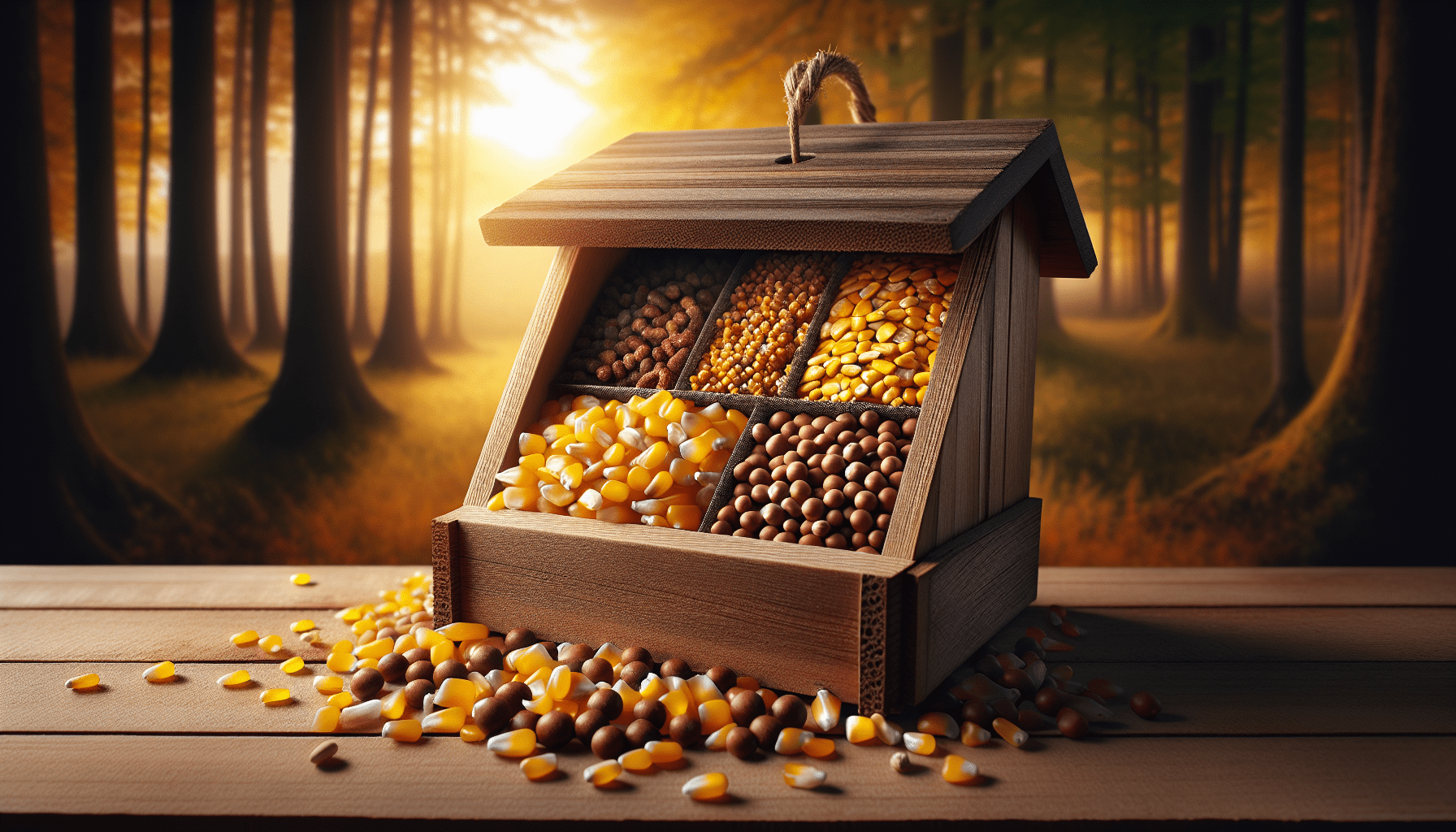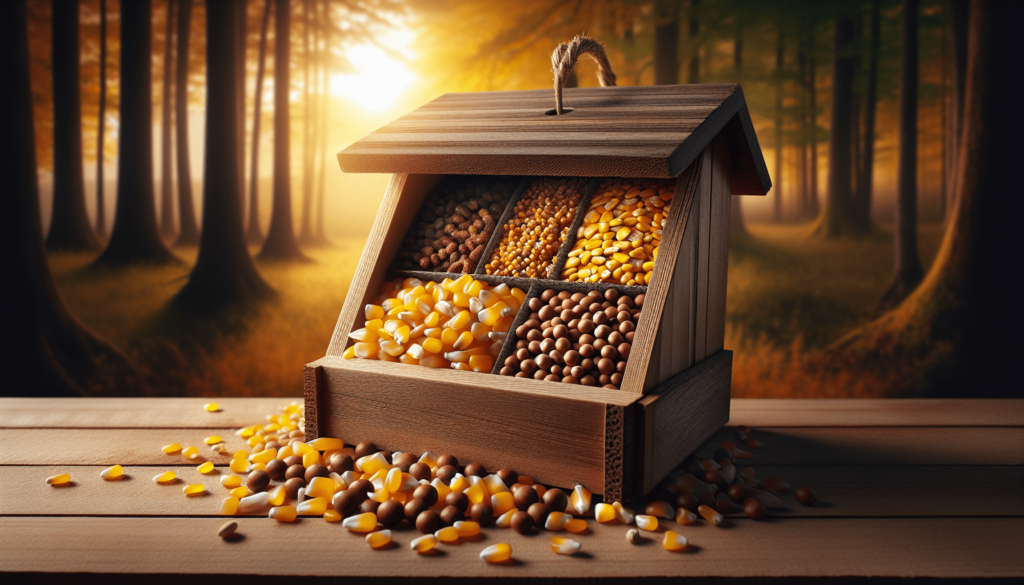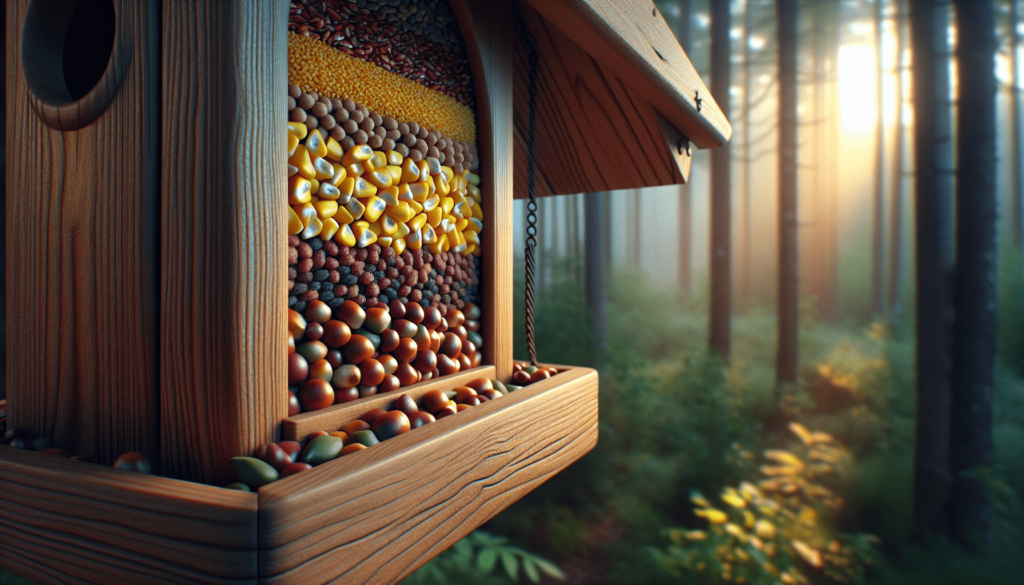
What do you think makes the perfect deer feeder filler? Is it the allure of sweet corn, the rich nutrients found in soybeans, or perhaps something more surprising? The choices you make can significantly influence the health of the deer in your area and draw them to your feeders. Let’s break down some of the options you have at your disposal.
Understanding Deer Nutrition
Just like us, deer have specific dietary requirements that must be met for them to thrive. Their diets can vary seasonally and depend heavily on their habitats. A balanced diet for deer includes carbohydrates, proteins, fats, vitamins, and minerals. Knowing this can help you choose the right fillers for your feeder.
Carbohydrates: The Energy Source
Carbohydrates are essential for providing energy. Deer often rely on them, especially during the colder months. High-carb options like corn are commonly selected due to their high energy content, which helps keep deer healthy and active.
Proteins: The Building Blocks
Proteins play a crucial role in growth and development. They are vital for antler growth in males and overall body condition for both genders. A feed that is rich in protein will support these developmental stages, especially when young males are growing their antlers.
Vitamins and Minerals: Micronutrients Matter
While macronutrients like carbs and proteins are important, don’t underestimate the role of vitamins and minerals in deer health. Minerals such as calcium and phosphorus are crucial for bone development and overall health, especially during the growing season.
Popular Deer Feeder Fillers
When it comes to filling those feeders, a few staples often come to mind. Here’s a breakdown of some of the most popular options you might consider.
Corn
Corn is likely the most recognized filler for deer feeders. Its sweetness and energy content make it a favorite, particularly in colder months when other food sources are scarce.
-
Pros:
- High in carbohydrates
- Attractive to deer
- Inexpensive and widely available
-
Cons:
- Low protein content
- Can lead to digestive issues if fed exclusively
- May attract unwanted wildlife
Soybeans
Soybeans are not only nutritious for deer, but they also have a rich protein profile, making them an excellent choice for those looking to support deer growth.
-
Pros:
- High in protein
- Contains essential amino acids
- Helps with antler development
-
Cons:
- More expensive than corn
- Requires cooking or fermentation for deer to digest properly
- Can spoil quickly in wet conditions
Oats
Oats are another staple that can be a great addition to your feeders. They are appealing to deer and provide both energy and protein.
-
Pros:
- Rich in fiber
- Good for digestive health
- Attracts a wide range of wildlife
-
Cons:
- Can be less attractive than corn
- May require mixing with other grains for better deer interest
Wheat
Wheat can be beneficial in late winter and early spring when other food sources start to dwindle. It offers both energy and protein.
-
Pros:
- Good source of carbohydrates
- Can be planted to provide a natural food source
- Attracts deer and other wildlife
-
Cons:
- Less preferred during the height of the growing season
- Requires knowledge of agricultural practices for planting
Alfalfa
Alfalfa is particularly rich in protein and is often used to supplement other feeds.
-
Pros:
- High protein content
- Easily digestible
- Attracts deer with its fresh taste
-
Cons:
- More expensive than grain options
- Needs proper storage to avoid spoilage
Sorghum
Sorghum is less common but can serve as a good alternative. It’s drought-resistant and provides a solid food source.
-
Pros:
- Durable crop that can withstand weather variations
- High in carbohydrates
- Attracts a variety of wildlife
-
Cons:
- Less palatable to some deer
- Requires more processing than other grains
Peanut Meal
Peanut meal can be an enriching option as it is high in protein. It can be used as a supplement alongside other fillers rather than a standalone option.
-
Pros:
- Excellent source of protein
- Provides essential amino acids
- Affordable compared to some other protein sources
-
Cons:
- Can spoil quickly if not stored correctly
- May require additional ingredients for taste

Charismatic Fillers: Fruits and Vegetables
You might be surprised to know that deer are often drawn to fruits and vegetables too. These can make for excellent fillers, especially in areas where these items are more accessible.
Apples
Deer have a well-documented fondness for apples. They are sweet, juicy, and can entice deer in a way that traditional fillers sometimes can’t.
-
Pros:
- High in sugar for quick energy
- Provides moisture
- Attractive scent for deer
-
Cons:
- Seasonal availability
- More expensive than grains in many regions
Carrots
Carrots are another hit with deer and can be a fun and unique addition to your feeder.
-
Pros:
- Low in calories
- High in fiber
- Can be grown at home
-
Cons:
- Less likely to be eaten before spoiling
- More labor-intensive to prepare than grains
Pumpkins
Filling your feeders with pumpkins can be a great way to utilize leftovers from the fall harvest.
-
Pros:
- High in moisture
- Unique food source
- Easily attracts deer
-
Cons:
- Spoils quickly if not consumed
- Requires a little more care to prepare
Considerations: Best Practices for Deer Feeding
While filling your feeder sounds straightforward, there are certain practices and considerations you need to keep in mind to ensure you’re providing the best for the deer in your area.
Balance is Key
It’s important to note that while one type of filler might be popular, deer need a balance of nutrients. Mixing different types of feed can prevent deficiencies and encourage a healthier herd.
Monitor Usage
Keep an eye on which fillers attract the most deer. You might find that certain options are more successful. Adjusting your primary choices based on their preferences can maximize your feeding efforts.
Freshness Matters
Once food spoils, it can become harmful to the deer. Ensure you’re regularly checking and replacing old food to maintain optimal health for the herd. Spoiled feed can lead to digestive issues and deter deer from returning to feed.
Seasonal Adjustments
As the seasons change, so do the dietary needs of deer. Depending on the time of year, certain fillers may be more appropriate than others. In winter, for instance, high-carb options are superior, while in summer, protein-rich choices might be best.

Environmental Impact
Sometimes, it’s easy to focus on the deer and forget how your choices impact the environment. Sustainable practices can prove invaluable in promoting healthier wildlife.
Native Plants
Encouraging the growth of native plants in your area can create a more sustainable food source. You can complement your feeders with these natural options to improve the ecosystem.
Soil Health
Choosing fillers that encourage good soil health can enhance natural habitats. For example, planting legumes not only helps deer but contributes to soil enrichment.
Wildlife Management
Being proactive about your feeders also means considering other wildlife. If your goal is to attract deer, you’ll want to find a way to do so without bringing in too many unwanted visitors, like raccoons or other animals.
Conclusion: A Thoughtful Approach to Deer Feeders
By considering the type of fillers you use in your deer feeders, you can significantly impact the health and well-being of the deer in your area. From the sweet allure of corn to the protein-rich content of soybeans and various fruits, the choices are plentiful and diverse.
Balancing the nutritional needs of deer and being mindful of seasonal requirements will require some thought, but it’s certainly worth the effort. Embracing different types of fillers can create a more robust feeding strategy that not only attracts deer but also supports their health.
Curating the right blends can enhance your feeding experience while promoting the overall well-being of the herd you admire. As you make these choices, keep an open dialogue with fellow deer enthusiasts, share experiences, and continuously refine your approach to ensure your feeders remain a favored destination for deer. Happy feeding!





